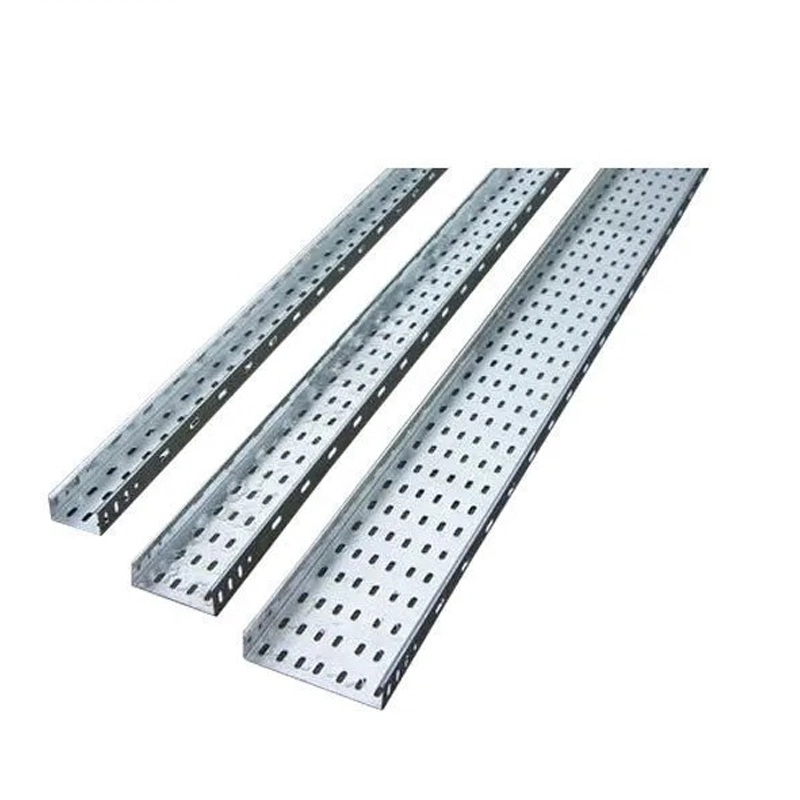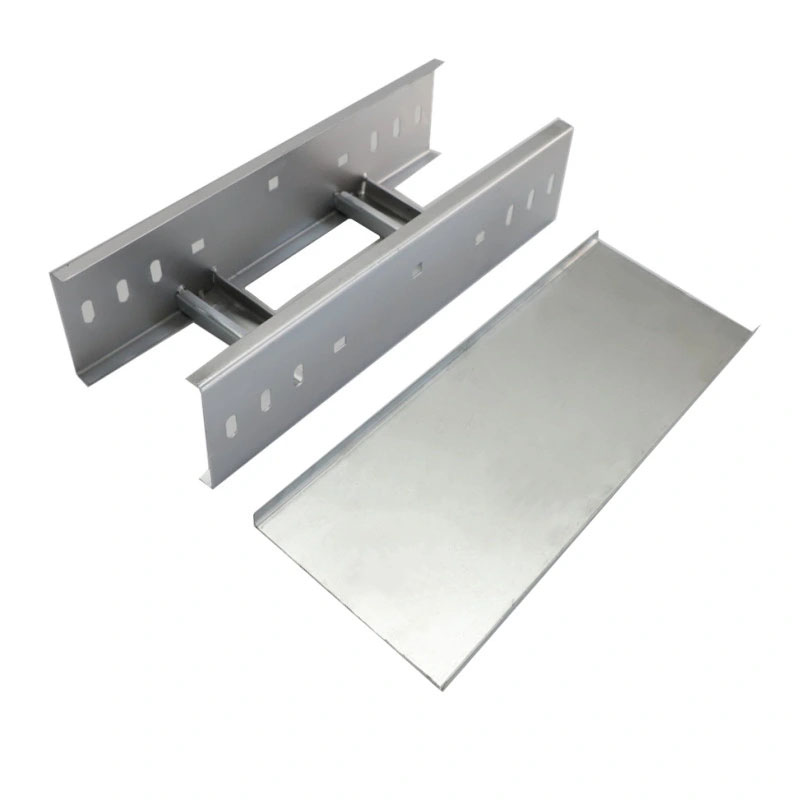How does an under-table cable tray achieve a perfect balance between convenient cable management and dust protection?
Release Time : 2025-11-06
In modern offices, home workstations, and even professional gaming environments, under-table cable trays have become essential accessories for improving space tidiness and user experience. They not only neatly organize messy power cords, data cables, HDMI cables, etc., but also bring a clean desktop, improving work efficiency and aesthetics.
1. Modular Opening Design: Flexible Cable Management, Intelligent Concealment
Traditional enclosed cable trays offer good dust protection, but cable management is difficult, and adding or removing equipment is extremely inconvenient. High-quality under-table cable trays generally use openable or sliding cover designs. For example, magnetic flip-top covers, snap-on movable panels, or flexible silicone sealing strips are located on the top or side. Users can quickly insert or remove cables with a simple push or lift, and the cover automatically closes after operation, forming a physical barrier. Some high-end products even introduce flexible cable entry points—rubber plugs with cross-cut notches that automatically conform and wrap around the cable as it passes through, allowing free insertion while effectively blocking external particles, balancing flexibility and sealing.
2. Fully Enclosed Bottom + Lateral Airflow: Blocking Dust Settling Paths
Dust primarily enters cable trays through gravity settling and airflow. Therefore, high-quality cable trays employ a one-piece or seamlessly spliced fully enclosed bottom design, completely preventing dust from seeping in from below the desktop. Simultaneously, the ends of the cable tray are not completely open, but are shielded by inward-retracting baffles, labyrinthine channels, or adjustable end caps, both providing cable exits and extending the dust entry path, utilizing the principle of "airflow inertial separation" to reduce particulate matter entering with the wind. For users of height-adjustable desks, some cable trays are also equipped with telescopic corrugated tubes or flexible sleeves, dynamically sealing the cable channels as the desk height changes, preventing gaps caused by movement.
3. Materials and Surface Treatment: Stain-Resistant and Easy to Clean, Long-Lasting Protection
The material of the cable tray directly affects its dustproof performance. Mainstream products mostly use high-density ABS engineering plastic, aluminum alloy, or flame-retardant PVC, with smooth and dense surfaces that do not easily attract dust. Some brands even add an anti-static coating to the inner wall to reduce static electricity adsorption caused by friction, reducing the possibility of dust accumulation at the source. Furthermore, light-colored or matte finishes are not only aesthetically pleasing but also minimize the visual presence of dust. Rounded corners and a smooth, edgeless design facilitate regular cleaning with a damp cloth or vacuum cleaner, resulting in extremely low maintenance costs.
4. User-Friendly Details: Balancing Safety and Cleanliness
Dust prevention is not just a cleaning issue but also a matter of safety. Accumulated paper scraps, food residue, or pet hair inside the cable tray can affect heat dissipation and even pose a short-circuit hazard. Therefore, excellent designs particularly emphasize cable securing and partitioning—using built-in cable tie slots, Velcro straps, or partitions to separate and secure power and signal cables, reducing disturbance from cable movement and indirectly minimizing the chance of debris getting embedded. Simultaneously, all opening edges are chamfered or edge-wrapped to prevent scratching the cable sheath and maintain the long-term sealing integrity of the system.
5. Scene Adaptability: Differentiated Protection from Home Offices to Professional Environments
The dust prevention strategies for cable trays vary depending on the usage environment. Home users prioritize protection against pet hair and treat crumbs, so products with silicone sealing holes and a fully enclosed structure are recommended. Businesses emphasize standardization and ease of maintenance, favoring modular quick-installation solutions with magnetic covers. Industrial or laboratory settings may require IP-rated certification, necessitating metal cable trays with rubber sealing rings to achieve high levels of dust and water resistance.
The value of an under-table cable tray extends far beyond simply concealing cables. Truly excellent design, while ensuring flexible cable access and expansion, constructs an invisible "dustproof barrier" through intelligent openings, a fully enclosed structure, stain-resistant materials, and meticulous detail optimization. It extends cleanliness beyond just the visual level, reaching into the dimensions of safety and long-term maintenance. When every plug and unplug is smooth and effortless, and the interior remains pristine, we truly achieve an efficient, elegant, and reassuring modern desktop ecosystem—this is precisely the intelligent balance that an under-table cable tray achieves between "access" and "protection."
1. Modular Opening Design: Flexible Cable Management, Intelligent Concealment
Traditional enclosed cable trays offer good dust protection, but cable management is difficult, and adding or removing equipment is extremely inconvenient. High-quality under-table cable trays generally use openable or sliding cover designs. For example, magnetic flip-top covers, snap-on movable panels, or flexible silicone sealing strips are located on the top or side. Users can quickly insert or remove cables with a simple push or lift, and the cover automatically closes after operation, forming a physical barrier. Some high-end products even introduce flexible cable entry points—rubber plugs with cross-cut notches that automatically conform and wrap around the cable as it passes through, allowing free insertion while effectively blocking external particles, balancing flexibility and sealing.
2. Fully Enclosed Bottom + Lateral Airflow: Blocking Dust Settling Paths
Dust primarily enters cable trays through gravity settling and airflow. Therefore, high-quality cable trays employ a one-piece or seamlessly spliced fully enclosed bottom design, completely preventing dust from seeping in from below the desktop. Simultaneously, the ends of the cable tray are not completely open, but are shielded by inward-retracting baffles, labyrinthine channels, or adjustable end caps, both providing cable exits and extending the dust entry path, utilizing the principle of "airflow inertial separation" to reduce particulate matter entering with the wind. For users of height-adjustable desks, some cable trays are also equipped with telescopic corrugated tubes or flexible sleeves, dynamically sealing the cable channels as the desk height changes, preventing gaps caused by movement.
3. Materials and Surface Treatment: Stain-Resistant and Easy to Clean, Long-Lasting Protection
The material of the cable tray directly affects its dustproof performance. Mainstream products mostly use high-density ABS engineering plastic, aluminum alloy, or flame-retardant PVC, with smooth and dense surfaces that do not easily attract dust. Some brands even add an anti-static coating to the inner wall to reduce static electricity adsorption caused by friction, reducing the possibility of dust accumulation at the source. Furthermore, light-colored or matte finishes are not only aesthetically pleasing but also minimize the visual presence of dust. Rounded corners and a smooth, edgeless design facilitate regular cleaning with a damp cloth or vacuum cleaner, resulting in extremely low maintenance costs.
4. User-Friendly Details: Balancing Safety and Cleanliness
Dust prevention is not just a cleaning issue but also a matter of safety. Accumulated paper scraps, food residue, or pet hair inside the cable tray can affect heat dissipation and even pose a short-circuit hazard. Therefore, excellent designs particularly emphasize cable securing and partitioning—using built-in cable tie slots, Velcro straps, or partitions to separate and secure power and signal cables, reducing disturbance from cable movement and indirectly minimizing the chance of debris getting embedded. Simultaneously, all opening edges are chamfered or edge-wrapped to prevent scratching the cable sheath and maintain the long-term sealing integrity of the system.
5. Scene Adaptability: Differentiated Protection from Home Offices to Professional Environments
The dust prevention strategies for cable trays vary depending on the usage environment. Home users prioritize protection against pet hair and treat crumbs, so products with silicone sealing holes and a fully enclosed structure are recommended. Businesses emphasize standardization and ease of maintenance, favoring modular quick-installation solutions with magnetic covers. Industrial or laboratory settings may require IP-rated certification, necessitating metal cable trays with rubber sealing rings to achieve high levels of dust and water resistance.
The value of an under-table cable tray extends far beyond simply concealing cables. Truly excellent design, while ensuring flexible cable access and expansion, constructs an invisible "dustproof barrier" through intelligent openings, a fully enclosed structure, stain-resistant materials, and meticulous detail optimization. It extends cleanliness beyond just the visual level, reaching into the dimensions of safety and long-term maintenance. When every plug and unplug is smooth and effortless, and the interior remains pristine, we truly achieve an efficient, elegant, and reassuring modern desktop ecosystem—this is precisely the intelligent balance that an under-table cable tray achieves between "access" and "protection."







